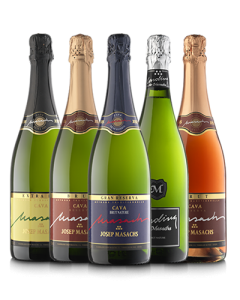Champagne was the first sparkling wine and it is arguably the most famous in the world. However, only wines made in the Champagne region of France may be called Champagne nowadays. Spain produces many fine sparkling wines, called cava after the cellars in which the wine is produced. Many Spaniards may call this wine champán colloquially, but they are not allowed to officially label the wines this way, despite the fact that these wines are made under the “Méthode Champenoise” or “Champagne method,” which is the same method that is used to make Champagne wine.
Because Spain is part of the European Union, the wine labeling system is pretty similar to those of France and Italy. The category you will most often see at your local shop is Denominación de Origen (DO), which is the equivalent of an Appellation d’Origine Contrôlée (AOC) in France. Each individual DO (for example, Ribera del Duero or Rías Baixas) has its own rules for the wines, such as which grapes can be planted. If for some reason you can’t find the DO on the bottle, the “logo” of the DO should be on a sticker on the back or on the capsule over the cork.
You’ll mostly find Cava production in Catalonia in the southwest of Barcelona (Sant Sadurní d’Noia / Penedés). Cava goes through the traditional method of secondary fermentation in the bottle to get its bubbles, like Champagne in France and Franciacorta in Italy. Cava can be white or rosé and is usually a blend of Xarel-lo, Macabéo, and Parellada grapes, but a few other varieties are also allowed in the blend. Cavas are usually dry, but like with Champagne, the amount of sugar from the dosage will be indicated on the label with such terms as Brut or Semi-Seco. If you’re looking for not-too-pricey sparkling wine for a special occasion or a weekend dinner, cavas as Agustí Torelló Mata or Cavas Masachs are a great choice.
